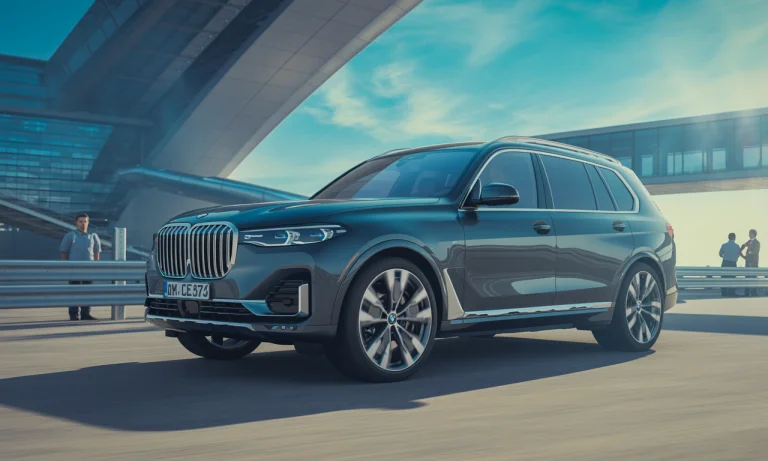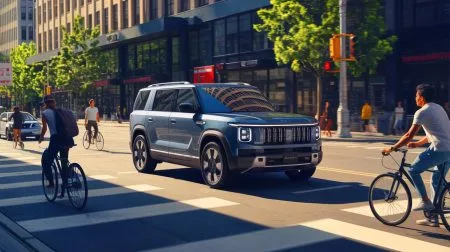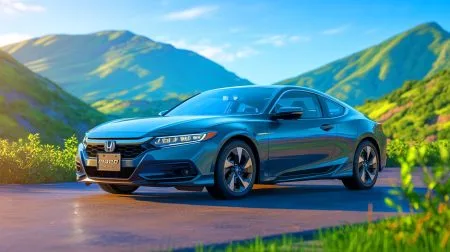Whispers of change swirl along Germany’s highways as the next-generation BMW X7 makes its secretive rounds amid speculation and lens-flashes. The IAA Mobility Show in Munich may have wrapped up, but the real intrigue played out away from the polished stands—on public German roads where a heavily camouflaged X7 prototype revealed just enough to ignite curiosity. Underneath the wraps, the design hints at a bold evolution: BMW’s flagship SUV stays loyal to its boxy silhouette—a visual legacy among luxury giants like Mercedes-Benz, Audi, and Porsche. Spy photos show massive wheel arches, a striking upright rear, possible split-headlights, and four bold exhausts—clues to both power and potential hybrid intention. As the automotive world pivots towards electrification and fierce competition from Volkswagen, Jaguar, Land Rover, Lexus, Volvo, and even Tesla, the X7’s transformation could redefine the very notion of luxury mobility. Anticipation is building, not just for a restyling but for a technological leap that could alter the SUV landscape for 2027 and beyond.
Next-Gen BMW X7: Camouflaged Evolution on German Roads
Just beyond the buzz of Munich, a rare sight unfolded—a black-and-white boxy shadow, tightly camouflaged, cruised past inquisitive locals and outstretched smartphones. Lorenzo Curatti, the director of Motor1 Italy, was in the right place at the right time, capturing the X7 prototype as it mingled briefly with everyday traffic. Despite the concealment, certain hallmarks were undeniable: a flat hood paired with a commanding, high roofline, a substantial side profile, and sculpted wheel arches hosting large, dynamic wheels. The rear, equally dramatic, showcased a possibly split tailgate equipped with four provisional exhaust pipes, clearly a nod to future performance ambitions. Headlights, split and sharp in design, mark BMW’s intent to stick with signature aesthetics, even as rivals like Mercedes-Benz and Audi test the limits of what defines modern luxury SUVs. These undercover drives are not just about testing mechanics—they signal the ongoing arms race in blending style, utility, and tech among Europe’s automotive elite.
| Key Spyshot Features | Comparison to Competitors |
|---|---|
| Boxy silhouette, flat hood | Echoes Land Rover and Mercedes-Benz G-Class luxury cues |
| Large wheels, sculpted arches | On par with Porsche Cayenne and Audi Q7’s sportiness |
| Split headlights, large grille | Competes with signature elements on Lexus LX and Tesla Model X |
| Possible split tailgate | Innovative access, reminiscent of Volvo XC90 and Jaguar SUVs |
Emerging Design: Familiarity Meets Innovation in BMW X7
Gliding along the autobahn, the prototype appears to embrace BMW’s characteristic design DNA while daring to push boundaries. Retaining a substantial presence on the road, the new X7 signals an evolutionary leap rather than a radical overhaul. The decision to preserve the flat hood and upright rear pays homage to earlier X7 models, even as the details—headlights that seem split, a grille possibly bolder than ever—suggest a careful recalibration. The quartet of exhaust pipes, although temporary, allude to forthcoming high-performance trims, possibly an M Performance variant poised to challenge AMG and RS badged rivals from Mercedes-Benz and Audi.
Yet, what lies beneath the camouflage is perhaps just as telling. The lack of drastic surface changes hints at BMW’s confidence in its flagship design, a confidence similarly observed in the approach taken by competitors like Porsche and Tesla as they update their luxury SUVs. Could this be a calculated move to preserve brand identity while layering on innovation in electrification and tech for the years ahead? In the world of flagship SUVs, sometimes familiarity is its own form of audacity.
BMW X7 Powertrains and Electrification: Bridging Legacy and the Future
With speculation swirling, the new BMW X7 is expected to receive a major technical evolution—one that will likely incorporate the latest in electrified drive systems. Industry insiders suggest that mild-hybrid and plug-in hybrid options will join classic six-cylinder gasoline engines, with a potential diesel variant still on the cards. Enthusiasts are particularly intrigued by whispers of a V-8 powerplant, which, if realized, would mark a direct salvo against powerhouses like the Porsche Cayenne Turbo and Mercedes-Benz GLS63 AMG. As global demand shifts and manufacturers race to meet emissions targets, BMW’s flexible powertrain strategy mirrors broader trends spotted across the luxury sector, including initiatives from Lexus and Volvo to expand electrified offerings.
| Powertrain Option | Likely Competitor | Purpose |
|---|---|---|
| Mild Hybrid | Mercedes-Benz GLE, Audi Q7, Volvo XC90 | Fuel efficiency, lower emissions |
| Plug-In Hybrid | Porsche Cayenne E-Hybrid, Lexus RX | Urban electric range & luxury performance |
| Inline Six-Cylinder/Mild Hybrid | Land Rover Discovery, Jaguar XJ SUVs | Classic performance, smoothness |
| V8 Engine (rumored) | Tesla Model X Plaid, GLS63 AMG, Porsche Cayenne Turbo | Flagship performance, prestige |
Positioning for the Global Market: BMW X7 vs Luxury Rivals
Looking ahead, BMW’s strategy for the X7 points towards a global ambitions strategy. Rumors suggest the unveiling could take place at a high-profile US or Asian auto show—key markets where SUVs now define brand prestige and profit. This global approach reflects lessons learned from the likes of Mercedes-Benz and Land Rover, both of whom have mastered the art of tailoring their flagship models for regional tastes and regulations. As competition heats up not only among traditional giants but also with disruptors like Tesla, differentiation through technology, electrification, and luxury will be the path forward. BMW seems poised, with the X7, to stake a wider claim in this evolving battleground.
The anticipation becomes more than a waiting game; it’s about decoding signals, reading between the lines of camouflage, and predicting how BMW will redefine what it means to drive—or be driven—in a technological, electrified future. For enthusiasts and industry watchers alike, the new X7 will serve as both a benchmark and an emblem of how legacy automakers confront the bold new era of mobility. For those eager to follow future trends in luxury electric vehicles and technology shifts, this resource on new EV directions gives broader context on how BMW, Porsche, and others will compete in the years ahead.
Frequently Asked Questions About the New BMW X7 Testing
What are the most noticeable design changes in the new BMW X7 prototype?
Observers have noted a flatter hood, sculpted wheel arches, and a bold upright rear, matched by split headlights and a large grille reminiscent of the current luxury design trends among rivals like Land Rover and Mercedes-Benz.
Will the next-generation BMW X7 include electric or hybrid options?
Current industry speculation suggests the new X7 will feature both mild hybrid and plug-in hybrid systems, aligning with the electrification strategies of Volvo, Lexus, and other competitors. A diesel variant, as well as classic six-cylinder and V-8 engines, may also be offered.
When is the official debut of the new BMW X7 expected?
While BMW has not confirmed a date, the next-gen X7 is rumored to be unveiled between 2026 and 2027, possibly at a major US or Asian auto show, reflecting its growing importance in those markets.
How does the new BMW X7 compare to luxury SUV offerings from Audi and Porsche?
The upcoming X7 stands out with its imposing design, anticipated electrified powertrains, and high-performance trim options. It competes directly with the Audi Q7, Porsche Cayenne, and flagship models from Mercedes-Benz and Tesla.
Where can I find more information about the shift towards electric luxury SUVs?
For in-depth insights into ongoing trends and future electric luxury vehicles, explore resources like this detailed analysis tracking industry movements by BMW, Volkswagen, and others.
Did you like it? 4.5/5 (27)







